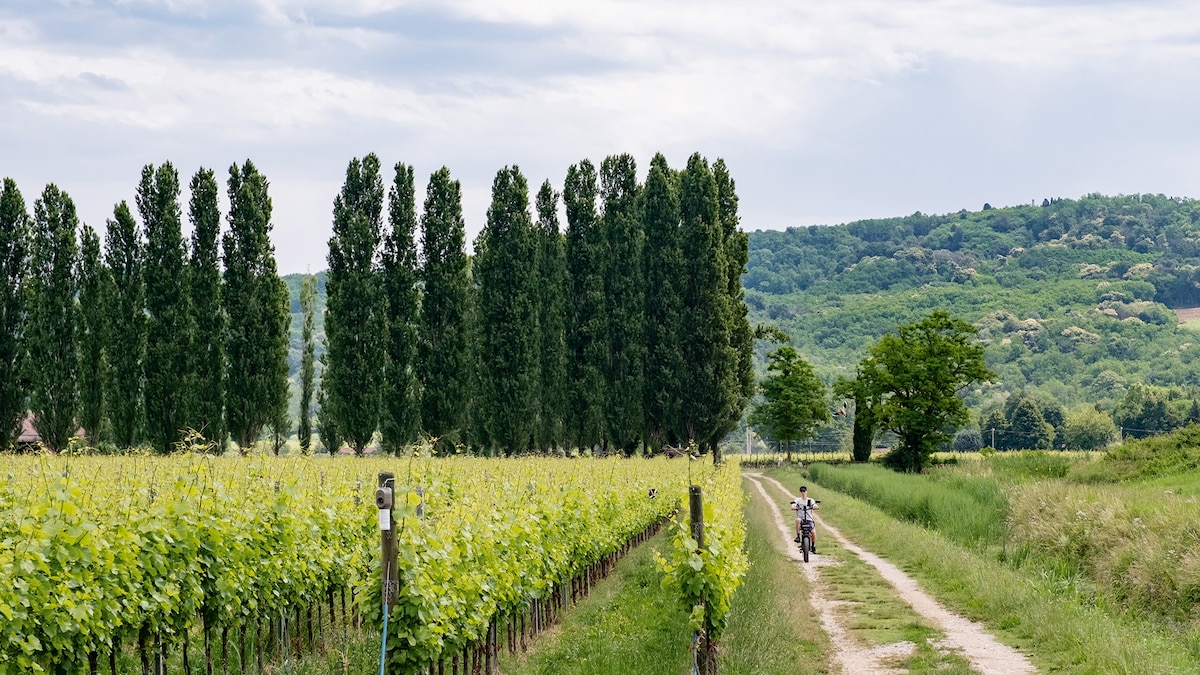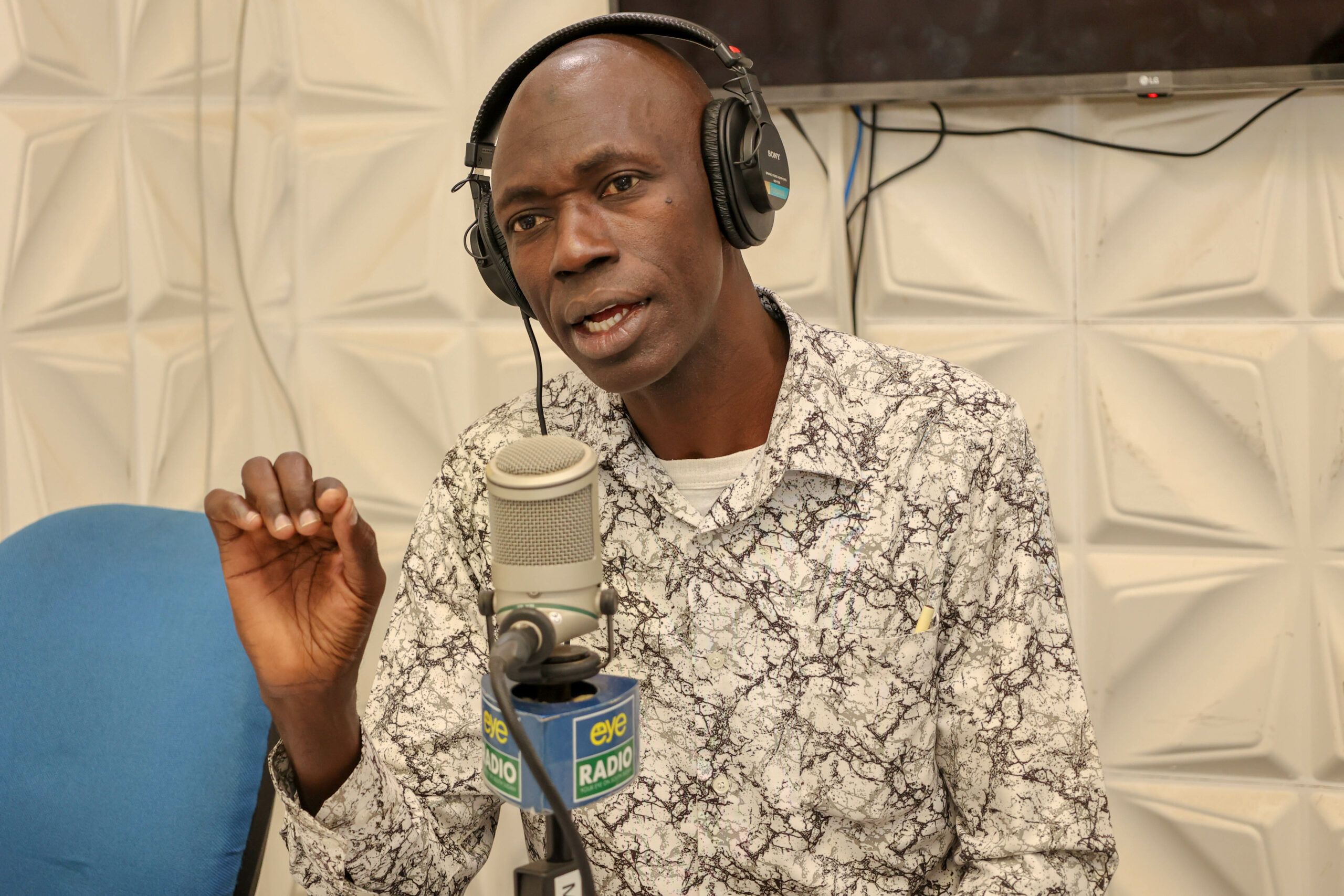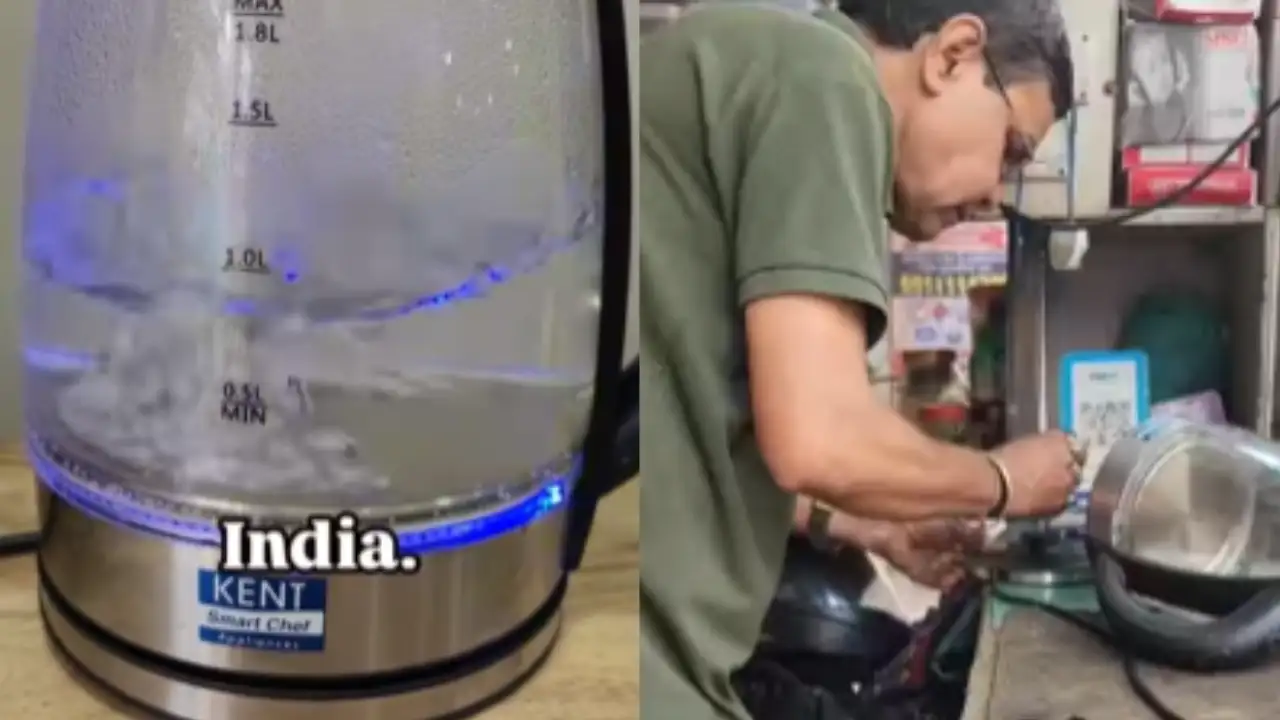
Ask the people of Gorizia what defines their home, and some will show you a photo of a cow, standing between a house and its wooden stables, straddling a white line on the ground. On the night of 15 September 1947, following the end of the Second World War and the treaties that retraced the contours of Europe, soldiers armed with paintbrushes split this medieval city in Italy’s north east. The centre remained part of Italy; the farms and fields, on the eastern outskirts, were given to neighbouring Yugoslavia, modern-day Slovenia. The shot was taken in the morning, when the image of the animal over the new perimeter — seeming half defiant, half unsure where it belonged — captured a sentiment locals found hard to put into words.
“You can’t speak of a border here,” says guide Anna Santellani, clad in head-to-toe Lycra, adjusting the saddle of her mountain bike. We’re about to set off on the Pedemontana, a four-stage, 113-mile cycling trail that links Gorizia and the city of Salice. Over two days, we’ll tackle two legs, each about 25 miles, cutting north west across the surrounding Friuli-Venezia Giulia region, spending the night in towns and villages along the way. Our starting point is Gorizia’s centre, not far from the spot where the picture was taken. “Few other places have such a sense of porosity, of continuity. The divide is something relative.”
In the wake of the partition, the twin, modernist centre of Nova Gorica (New Gorizia) was founded just across the edge of Slovenia. The two destinations have been jointly recognised as the 2025 European Capital of Culture, the first time the title has been shared by two hosts. Walking tours cover the troubled history of the area, taking in sights ranging from fascist-era buildings to a tribute to communist statesman Josip Tito spelled in stones on a nearby mount. Meanwhile, the programme of events, running until December, aims to transcend boundaries, both literally (‘smuggling tours’ recreating the experience of 20th-century contrabandists) and figuratively (an exhibition on the ‘thresholds’ of fashion).
In a way, it’s a fitting welcome to the Pedemontana. The trail bridges a geographical frontier, meandering through countryside along the regional Alpine border. As soon as we leave the city, we find ourselves among the gentle hills of the wine-producing Collio region, where vineyards drape the landscape like a patchwork quilt; in the distance, always in view, are the foothills of the Carnic and Julian Alps. If you were to continue to the other end of the trail, you’d reach the Friulian Dolomites Natural Park, part of the UNESCO-listed Dolomite Mountains.
It’s partly the chance to watch the scenery unfold like this — play-by-play, slowly but continuously — that’s turned Friuli-Venezia Giulia into a riders’ playground in the past 15 years. On a practical note, it has dedicated infrastructure, like buses and trains fitted with bike racks; on an experiential one, it showcases a variety of landscapes, from languid beaches in the south to the Alpine peaks. In 2024, the Pedemontana won the so-called ‘Cycling Tourism Oscar’, given by the Italian Cycling Federation to paths that encourage a slower form of travel.
“The places you visit leave their mark, and that’s especially true if you’re in the saddle,” says Anna over her shoulder, cycling just ahead of me. “If you enter a wood, you feel it with your whole body — in the smells, sounds, on your skin.” The path is easy on the wheels — partly paved, partly dirt, almost entirely flat — leaving me free to focus on what’s around. We greet a woman foraging for wild hops, then brake to pick mulberries and sour marasca cherries from the roadside. We speed next to a river in full spate, energised by the rain that’s fallen incessantly this spring, and cross a ford that sends splashes up our shins. When we pause at a roadside cafe, we crash a birthday party as a group of locals toasts: “We drink, we drink, we drink!”
“Our wines have collected so many accolades, they’re called ‘super-whites’,” says Anna that evening, sipping a glass of local dry Ribolla, in a piazza in Cividale del Friuli at the end of the trail’s first stage. It was the first duchy of the Longobards, a Germanic tribe that ruled most of the Italian peninsula from the sixth to the eighth centuries. They’re remembered as harsh and fierce; many Italian words to describe fighting are still derived from their language.
The next day, back in the saddle, we discover a similar harshness to the landscape. The trail runs closer to the foots of the mountains, which are mammoth and jagged like rock-shards. In 1976, an earthquake of biblical proportions had its epicentre here — so powerful, its ripples were said to have been felt in Rome, over 300 miles south. When the dust settled, the area was in ruins, including the 14th-century villages of Gemona, at the end of stage two, and nearby Venzone, where Anna takes me.
Locals demanded it be rebuilt ‘where it was, as it was’. Old photos were consulted, the rubble sorted, the fallen building blocks placed in order and numbered. The houses were reconstructed piecemeal, with each slab in its rightful place. If original elements were too damaged, they were replaced with slightly different copies; sometimes, a translucent coat was applied to differentiate the authentic from the replica. “They wanted to avoid a ‘theme park effect’,” says Anna as we walk the streets. “Everything had come down, but you still feel you’re somewhere real.”
Named Most Beautiful Village in Italy in 2017, a title assigned annually by the National Association of Italian Municipalities, Venzone is so charming you’d never guess its backstory. But there are small hints of its tumultous past. On the side of the local church, Anna points out a single stone slab that was restored down its middle.
Half of it is rough, the work of stonemasons of old, and half of it is sheer, a modern addition. Half of it something, half of it something else, the liminal space greater than the sum of its parts.



